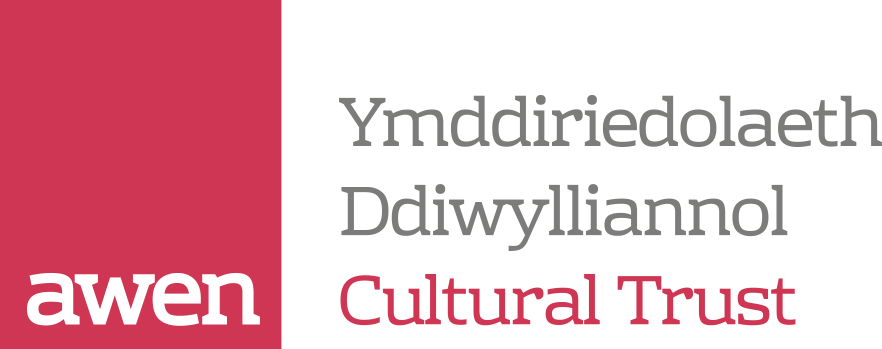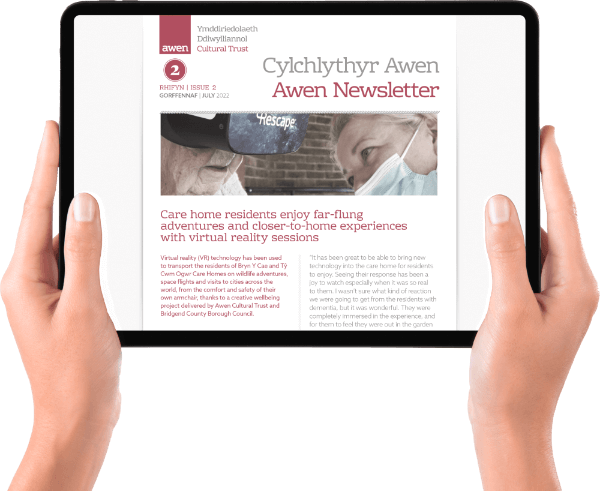Our Future
Grand Pavilion Redevelopment
Grand Pavilion, Porthcawl
The Grand Pavilion, Porthcawl’s much-loved theatre has been awarded £18m Levelling Up Funding from the UK Government, following a successful application by Bridgend County Borough Council working in close partnership with Awen Cultural Trust. The redevelopment of the Grand Pavilion represents a once-in-a-generation opportunity for us to safeguard this iconic building for many years to come and ensure it retains its position as a flagship regional arts and cultural venue of choice.
Following a lengthy public consultation process, final plans were approved for the conservation and repair of the some of the building’s iconic Art Deco features including the clock tower and stained-glass windows, alongside new extensions including glazed, roof top pavilions with views out towards the Bristol channel, a passenger lift, auditorium, gallery, toilet facilities and supporting back of house areas.
The plans also include a sensitive restoration of the building’s original domed roof, with new insulation, and the original, unique marine-styled, weathervane being reinstated.
The 1932 building has undergone decommissioning and enabling works; an essential part of the preparation of the building in readiness for the main renovation work later this year.
The redevelopment of the Grade II Listed building will address the existing risks to the building’s fabric and also meet the needs and aspirations of local people for extended and improved arts, culture and heritage services.
Grand Pavilion Redevelopment FAQs
The Grand Pavilion closed in February 2024.
The building work, which is due to commence shortly, will take around two years to complete. This will be followed by a fit-out process.
The Grand Pavilion was built in 1931-32 and is a mainly ferrous-concrete structure. Although a cutting-edge construction material at the time, the building now requires comprehensive repairs as a result of over 90 years of weathering and piecemeal maintenance. The cost of repairing and preserving the Grand Pavilion in just its existing state is significant. The funding will also be used to enhance the venue for the community now and in future generations, with the addition of a new studio theatre, gallery and artists’ studios and rooftop pavilions. Our commitment to making the venue fully accessible – for the first time in its history – and ensuring it is an energy efficient building will also take a considerable amount of the funding.
For the first time in its 90 year history, you will be able to access the Grand Pavilion though the central main entrance with a new ramp from the pavement and use a new lift to access all floors, including the auditorium balcony and the new rooftop pavilions. More accessible toilets will be added, as well as a fully compliant Changing Places facility.
Yes, the new studio theatre at ground and gallery and artists’ studios at street level will be built on the old tennis courts, which were often used as an overflow parking area. The existing car park will be reconfigured. The area will be soft landscaped to improve its visual aesthetic. There are car parks within easy walking distance of the Grand Pavilion, as well as free parking spaces along the promenade, which are used by our customers. Additional car parking within Porthcawl forms part of Bridgend County Borough Council’s town regeneration plans.
Yes, the Grand Pavilion’s original galleon weather vane, which has been kept in storage since it was damaged during stormy weather, will be restored and returned to the top of the dome.
The auditorium will be largely untouched by the redevelopment, as it has been well preserved. Minimal changes will be made to improve operations and accessibility. The capacity will remain around the 680 mark. The new studio theatre will have a capacity of around 145 seats.
We will be working with the Heritage Development Manager to devise innovative and creative ways of telling the story of the Grand Pavilion, including its links with the renowned American singer and civil rights activist Paul Robeson, which is of huge historical importance. We will also be speaking to people in the local community to capture their memories of the venue, so these too can be retold.
We will be using a range of traditional and digital methods to communicate updates including: face-to-face engagement sessions; printed newsletters; articles in local publications; Grand Pavilion website and social media; on-site hoardings; email newsletters; and behind-the-scenes tours, when it is safe to do so.

